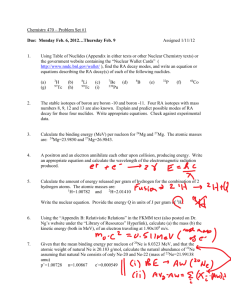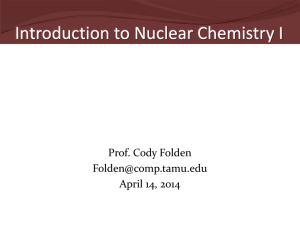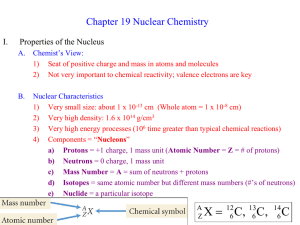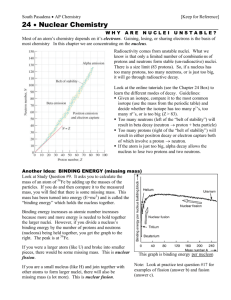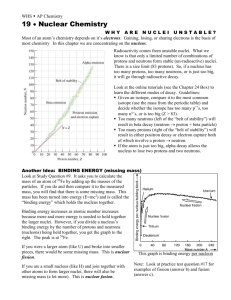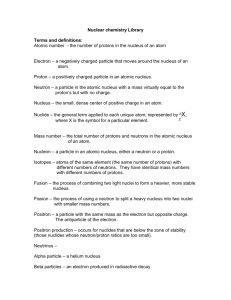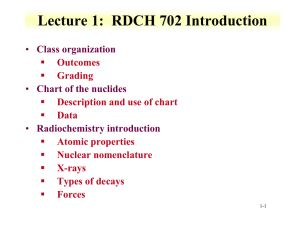chemistry: nuclear chemistry kinetics of radioactive decay kN
advertisement
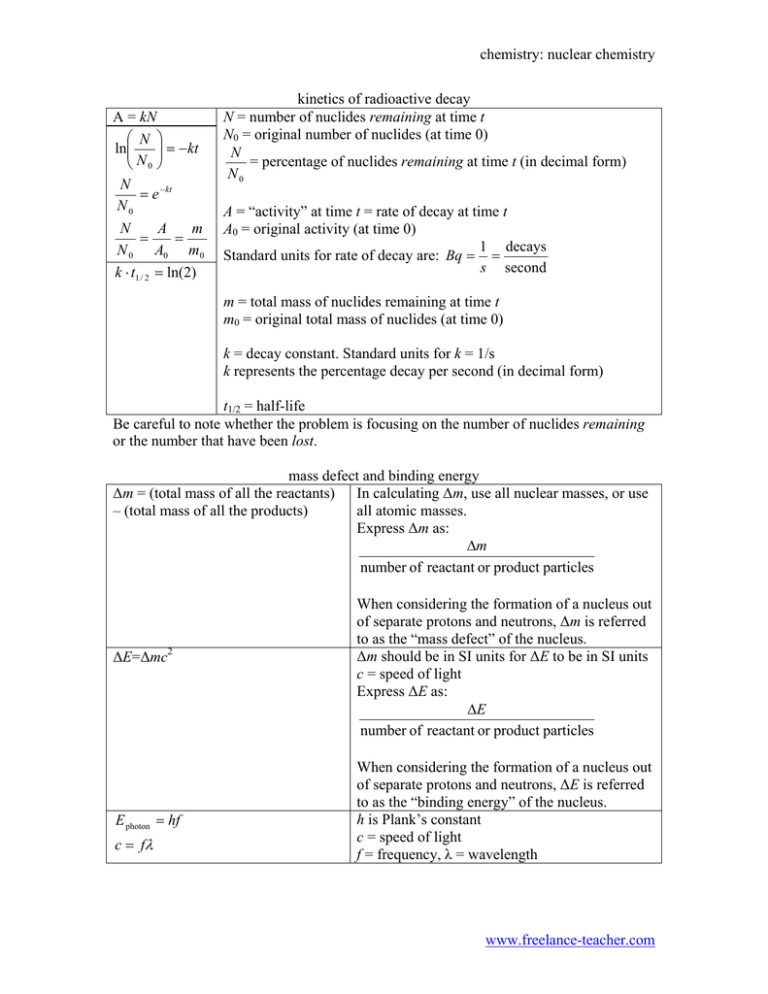
chemistry: nuclear chemistry A = kN ⎛ N ⎞ ⎟⎟ = − kt ln⎜⎜ ⎝ N0 ⎠ N = e − kt N0 N A m = = N 0 A0 m0 k ⋅ t1 / 2 = ln(2) kinetics of radioactive decay N = number of nuclides remaining at time t N0 = original number of nuclides (at time 0) N = percentage of nuclides remaining at time t (in decimal form) N0 A = “activity” at time t = rate of decay at time t A0 = original activity (at time 0) 1 decays Standard units for rate of decay are: Bq = = s second m = total mass of nuclides remaining at time t m0 = original total mass of nuclides (at time 0) k = decay constant. Standard units for k = 1/s k represents the percentage decay per second (in decimal form) t1/2 = half-life Be careful to note whether the problem is focusing on the number of nuclides remaining or the number that have been lost. mass defect and binding energy ∆m = (total mass of all the reactants) In calculating ∆m, use all nuclear masses, or use – (total mass of all the products) all atomic masses. Express ∆m as: ∆m number of reactant or product particles ∆E=∆mc2 E photon = hf c = fλ When considering the formation of a nucleus out of separate protons and neutrons, ∆m is referred to as the “mass defect” of the nucleus. ∆m should be in SI units for ∆E to be in SI units c = speed of light Express ∆E as: ∆E number of reactant or product particles When considering the formation of a nucleus out of separate protons and neutrons, ∆E is referred to as the “binding energy” of the nucleus. h is Plank’s constant c = speed of light f = frequency, λ = wavelength www.freelance-teacher.com

